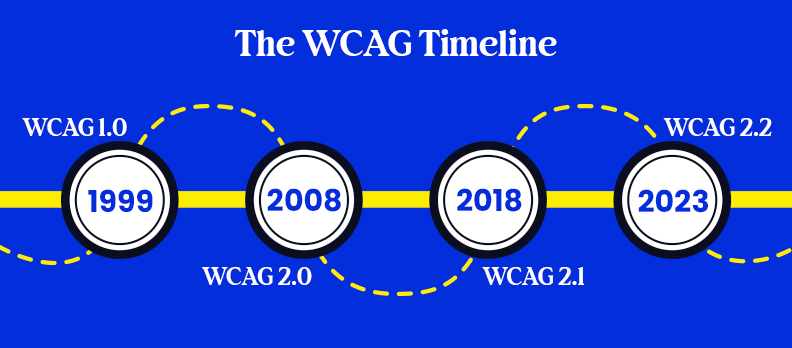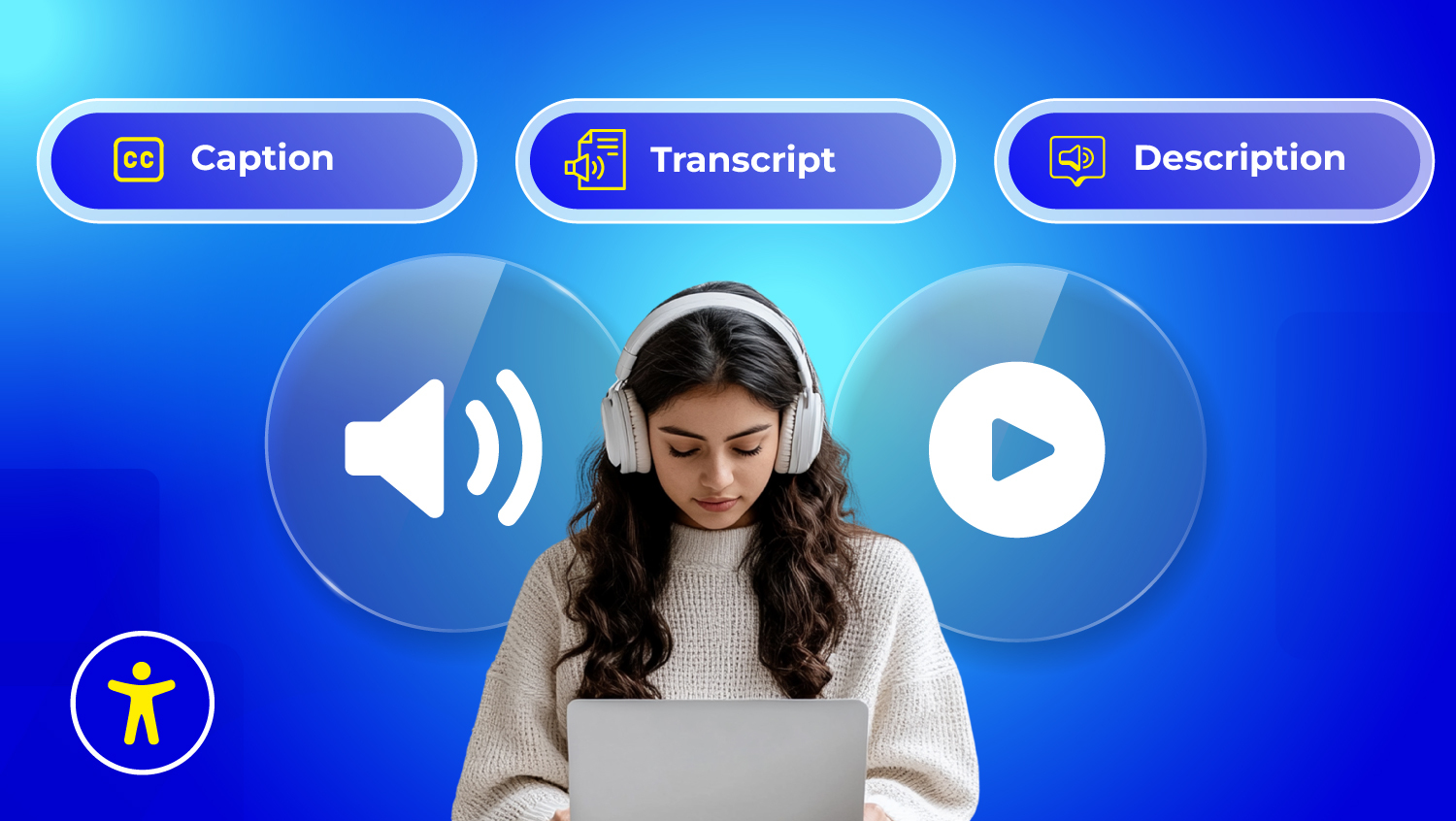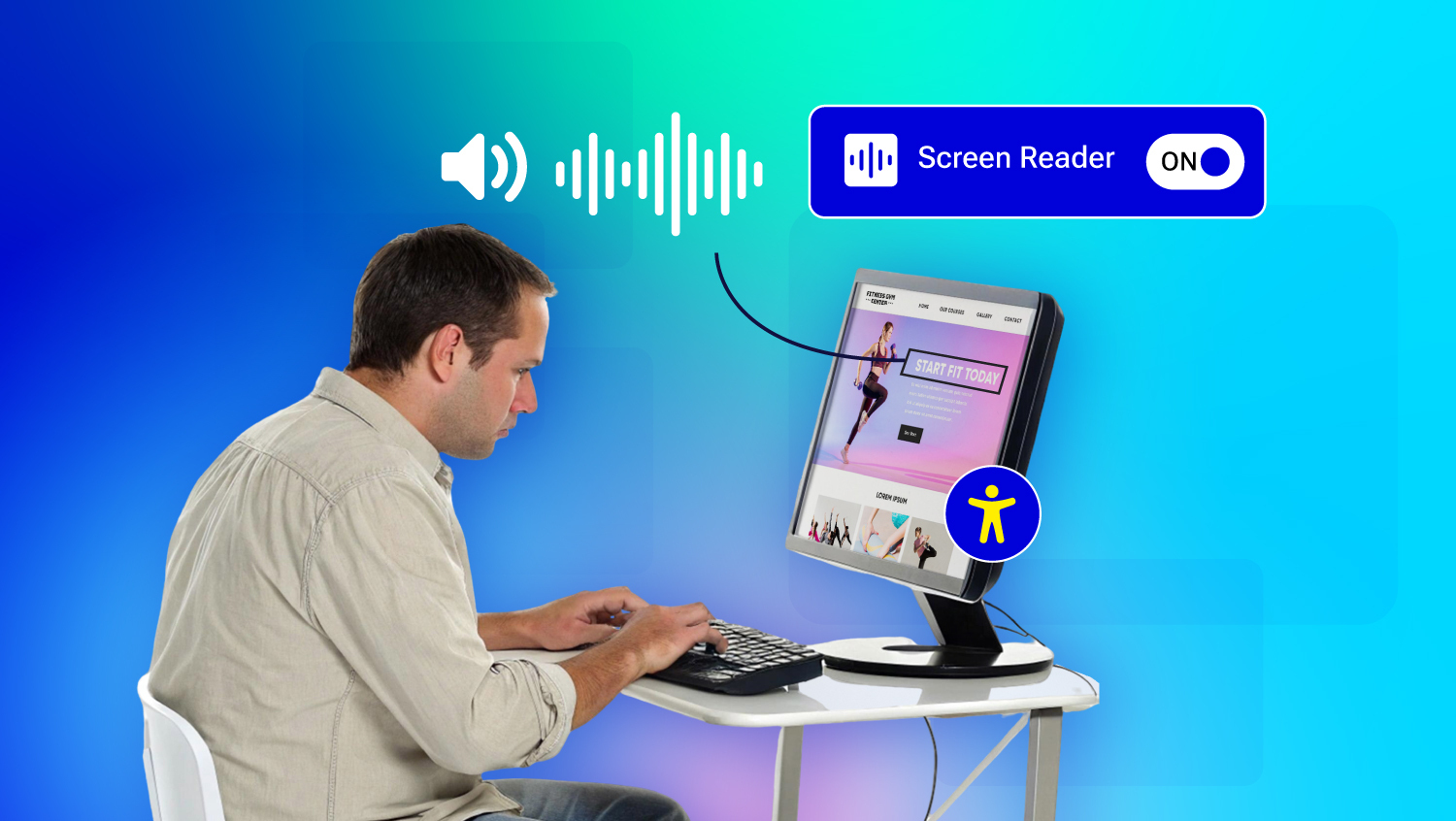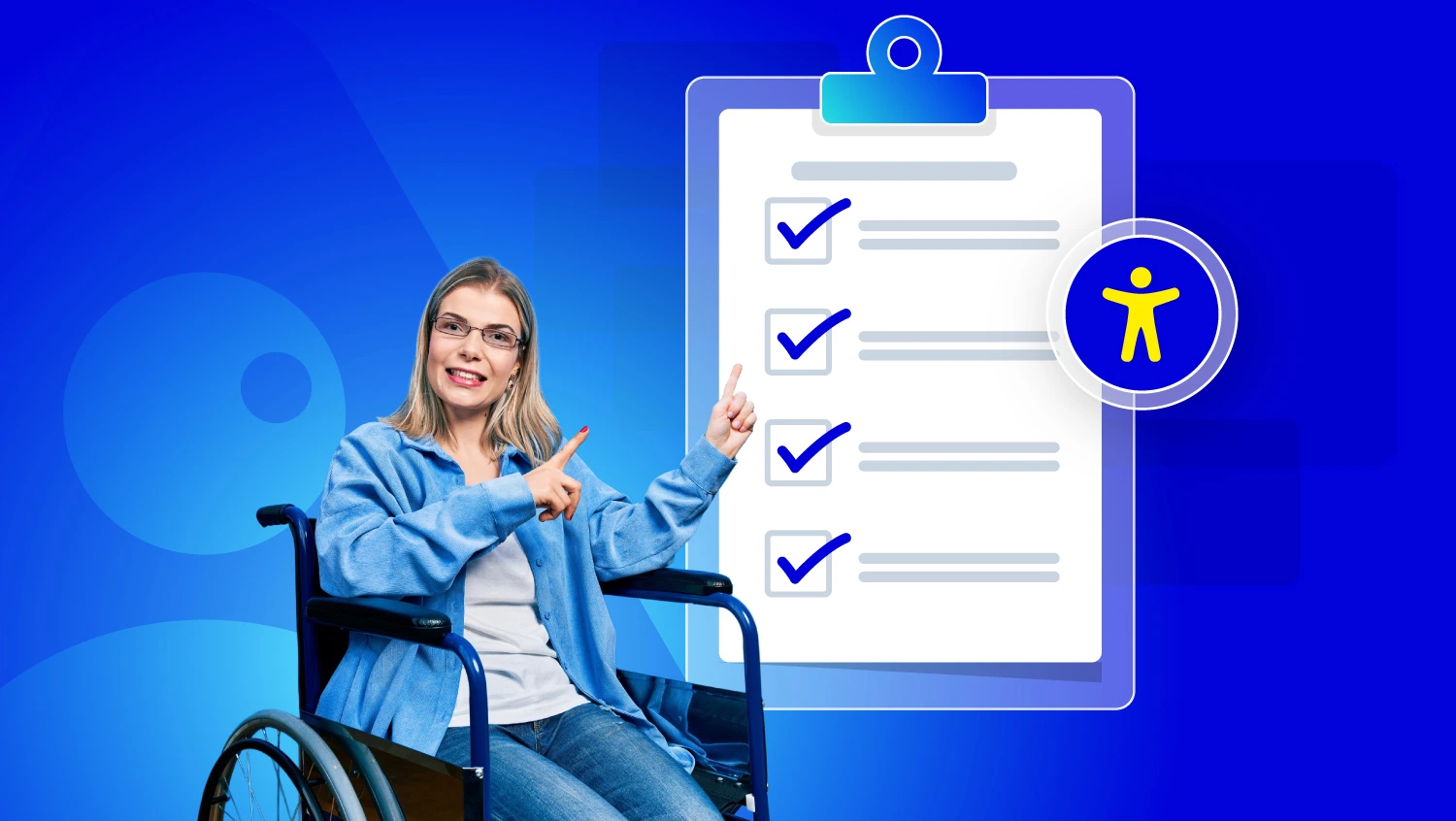WCAG Guide: Making the Web Accessible to All

WCAG Explained: What It Is and Why It Matters
The Web Content Accessibility Guidelines (WCAG) are a wide-recognized and international set of thresholds to render websites and digital content accessible for those with disabilities. WCAG recognizes a range of accessibility from vision, hearing, mobility, and cognitive impairments situations.
For organizations looking to simplify compliance, tools like Accessibility widget are fast to install, which enhances web accessibility. Accesstive Assistant supports WCAG & ADA compliance through screen reader, keyboard & UI adjustments.
The guidelines were built upon the 4 tenants of Perceivable, Operable, Understandable, and Robust (POUR). These standards assist in creating internet experiences which are inclusive. In order for digital content to be accessible, appropriate compliance with WCAG requirements must be carried out.
Accessibility will benefit not only those with disabilities but also anyone who is in less than ideal situations, including mobile users in bright sunlight, or people with temporary injuries.
WCAG consists of three levels of conformity:
- Level A – Meets the minimum threshold of accessibility.
- Level AA – This is the most commonly implemented level and, strikes the best balance between accessibility and practicality - you will need to research depending on your web content.
- Level AAA – Is the highest level but, is not always possible for all content.
These guidelines are valuable for any person or organization building, developing and maintaining a website, and are commonly used as a WCAG checklist for website accessibility audits and compliance
(Source: W3C – Web Content Accessibility Guidelines Overview)
Who’s Behind WCAG? The People Powering Web Accessibility Standards
The World Wide Web Consortium (W3C), specifically the Web Accessibility Initiative (WAI) began its work on improving web accessibility internationally in 1997. W3C is an international community developing open standards for the web, and WCAG is one of, if not the best known, their outputs.
The original WCAG 1.0 was published in 1999 and has continued to evolve into WCAG 2.0 (2008), WCAG 2.1 (2018), and the most recent version 2.2 (2023). Work has already started on WCAG 3.0 with each of these versions evolving to align with changes in technology, user requirements, as well as best practices and guidance on accessibility.
W3C's WAI continues to enhance and maintain WCAG through an open and collaborative process that attracts the contributions of accessibility experts, developers, organizations and the general public. This provides the opportunity to affect WCAG and thereby increase awareness and to continue to promote WCAG web accessibility for all.
(Source: W3C – About WCAG)
You can explore detailed resources in our Compliance Hub to understand the standards and their global implications.
Why WCAG Compliance Isn’t Optional – It’s Essential
WCAG compliance is not only a legal box that needs to be ticked, it’s about making your website usable by everyone, including the >1.3 billion people across the globe with disabilities (source:WHO).
In terms of business case, ideas around accessibility mean websites have wider reach, improved usability for *all* users, and a much better chance of achieving good SEO because the code is cleaner and more semantic.
In many places, WCAG web accessibility is associated with legal obligations i.e. in the US, EU, UK, Canada and Australia. Non-compliance opens organizations to lawsuits and fines and reputational damage.
Beyond law and profit, there is a moral responsibility, and a WCAG checklist offers shape and commitment to organizations addressing access issues by ensuring equal opportunities for users to access information, products and services.
As a side-effect, quality accessibility initiatives ultimately build brand trust, customer commitments, and a potential for goodwill in the public eye.
(Source: W3C – Introduction to Web Accessibility)
What Is POUR? The 4 Pillars That Power Accessible Design
POUR - Perceivable, Operable, Understandable, and Robust, are the four principles that guide all aspects of WCAG; they underlie every WCAG compliance success and are fundamental to create accessible digital experiences.
- Perceivable: Information must be presented and made available in multiple perceptual methods so all users can perceive it. For example, using alt text for images, and captions for video.
- Operable: Users must be able to navigate and interact with the site, or perform actions using various methods - keyboard, mouse, screen reader, or any other assistive technologies.
- Understandable: All content must be reasonably intelligible, and interfaces (including content) should be predictable, so as to limit confusion.
- Robust: Web pages should work with any number of assistive technologies existing now and with those that may exist in the future.
Without a user first approach, WCAG web accessibility would simply become a list of individual technical rules. The user first approach provides an action framework that help development teams, product designers, or content creators make decisions through the lens of inclusion at every stage of a project.
Automated monitoring tools like Access Monitor ensure your site remains aligned with POUR principles over time.
A Quick Guide to WCAG Versions: From 1.0 to 2.2

The Web Content Accessibility Guidelines (WCAG) reached several different versions in order to respond to the changing technology and user needs.
- WCAG 1.0: Came out in 1999; early access by web designers focused on simple HTML pages; suggested basic accessibility rules.
- WCAG 2.0: Came out in 2008; WCAG 2.0 was organized around the five POUR principles, and was meant to apply to more than just basic HTML.
- WCAG 2.1: Came out in 2018; is similar in format to WCAG 2.0, but added success criteria for mobile accessibility, and more information on users with low vision and cognitive disabilities.
- WCAG 2.2: Came out in 2023 (most recently), added several more success criteria for improving navigation, navigation aids, and support for users with low vision and cognitive disabilities.
Every new version includes the requirements of previous versions. Therefore, if a website meets the current WCAG 2.2 requirements, it meets the WCAG 2.1 and 2.0 requirements too.
Understanding WCAG Levels (A, AA, AAA) – What You Really Need to Know
WCAG compliance has three levels of conformance, generating degrees of accessibility.
- Level A – The most minimal level, dealing with the most basic accessibility requirements. Failing at Level A could entirely exclude access for a user who has a disability.
- Level AA – What most organizations want to achieve. Addressing the biggest and most common access barriers while still allowing creative design and branding options. Level AA conformance is often used by many WCAG checklists and web accessibility audits because it provides a baseline that is usually accessible for the widest range of users without placing unreasonable restrictions on designs and branding.
- Level AAA – The highest level includes best success criteria for the most accessible experience. Level AAA may be helpful for certain types of content, however due to restrictions of design and content, AAA is usually impractical to require full conformance at this level on an entire website.
The appropriate conformance level depends on the legal obligations, user needs, and industry standards. However, at a minimum it is a best practice to adhere to Level AA to achieve WCAG web accessibility and reduce compliance risk.
WCAG and the Law: What’s Legally Required and What’s Best Practice?
Even though WCAG is only guidelines and is not technically law, it is almost universally held as the de facto standard to measure web accessibility. Numerous governments have cited the WCAG in their legislative framework so that if you are not compliant with WCAG, it could warrant legal repercussions.
There are also places, and potentially states, where organizations are mandated to use a WCAG checklist at Level AA to conform with accessibility laws.
For instance, to meet accessibility laws in jurisdictions such as the United States by way of the ADA, in the EU by way of the European Accessibility Act, and in the UK by way of the Equality Act, you will need to follow a WCAG checklist.
Falling short of accessibility and compliance can result in:
- People or advocacy groups suing you
- Fines and penalties by regulatory authorities
- Reputational harm as a result of publicised accessibility failures
Simply not paying attention to accessibility standards and WCAG could substantially expose your site to risks (both financially and reputationally) and sites that use WCAG are better designed for all users whether they are disabled, mobile users, or people in extreme environmental situations.
Your WCAG Compliance Checklist: Practical Steps to Meet the Standards
The table below turns WCAG compliance requirements into clear, actionable steps. This format makes it easier to integrate into your WCAG checklist or internal accessibility audits.
WCAG Requirement | Action to Take | Key Benefit |
Text Alternatives (1.1.1) | Add descriptive alt text for meaningful images; use empty alt for decorative ones. | Supports screen reader users & improves SEO. |
Keyboard Navigation (2.1.x) | Ensure all interactive elements are accessible via keyboard only. | Helps users with motor impairments navigate without a mouse. |
Color Contrast (1.4.3) | Maintain 4.5:1 ratio for normal text, 3:1 for large text. | Improves readability for low-vision users. |
Focus Indicators (2.4.7) | Keep visible outlines for all focusable elements. | Shows users where they are on a page. |
Resize Text (1.4.4) | Allow zoom up to 200% without breaking content. | Benefits low-vision and mobile users. |
Consistent Navigation (3.2.3) | Use the same menu order and placement across pages. | Builds familiarity and reduces cognitive load. |
Accessible Forms (3.3.x) | Clearly label fields, provide instructions, and use helpful error messages. | Prevents user input errors and frustration. |
Pointer Target Size (2.5.8) | Make clickable/tap areas at least 24x24 CSS pixels. | Improves usability on touch devices. |
Avoid Time Traps (2.2.x) | Let users extend, pause, or disable time limits. | Helps those with cognitive or motor challenges. |
Accessible Authentication (3.3.8) | Avoid memory-based puzzles; offer alternatives to CAPTCHAs. | Ensures login processes are usable by all. |
Regularly test with automated tools like Axe or WAVE, plus real assistive tech, to confirm WCAG web accessibility compliance.
Case Study: Apple’s Accessibility Strategy and WCAG Compliance
Apple has built a reputation for user-first design that aligns closely with WCAG web accessibility standards. Accessibility is not an afterthought, it’s a core product philosophy.
The Challenge
People with disabilities often face barriers when using mainstream technology. Many devices lack built-in accessibility features, forcing users to rely on third-party solutions that can be inconsistent or costly.
Apple’s Approach
Apple integrates accessibility into every stage of product design:
- VoiceOver Screen Reader – Built into iOS, iPadOS, and macOS, allowing blind and visually impaired users to navigate without sight.
- Full Keyboard Navigation – Enables operable functionality for users with motor impairments, meeting WCAG Operable guidelines.
- Display Customization – High-contrast modes, text size adjustments, and color filters support WCAG Perceivable standards.
- Consistent UX – Uniform navigation patterns across devices improve learnability for all users, fulfilling WCAG Understandable principles.
The Results
- In 2023, Apple ranked #1 for accessibility in the American Foundation for the Blind’s corporate accessibility scorecard (AFB Source).
- VoiceOver is now available in over 40 languages, expanding accessibility to global markets (Apple Accessibility).
- Apple’s accessibility focus has contributed to strong brand loyalty, studies show 90% of iPhone users remain with Apple for their next purchase (Statista).
Why It Matters
Apple demonstrates that WCAG compliance is more than a legal safeguard, it’s a strategic business asset. By following WCAG checklist principles, Apple not only ensures legal protection in markets like the U.S. (ADA, Section 508) and EU (EN 301 549), but also reaches underserved user groups, drives customer loyalty, and strengthens its brand image.
Conclusion
WCAG compliance is not just about checking a box; it's about investing in usability, inclusivity and brand trust for the long term. By using the WCAG Checklist, we ensure websites are usable for people with disabilities, adhere to legal standards enacted globally, and enhance overall user satisfaction.
By implementing the new standards set forth in WCAG 2.2 Level AA, we are protecting our website investment for the future, extending our audience reach, and reducing legal risk. Accessibility is something that benefits everyone and organizations that make it a priority, are setting themselves apart as leaders when it comes to digital responsibility.
FAQs
WCAG stands for Web Content Accessibility Guidelines. These are international standards developed by the W3C to make web content more accessible to people with disabilities.
WCAG is based on four core principles of accessibility:
- Perceivable – Information must be presented in ways users can perceive.
- Operable – Interface must be usable via keyboard and assistive tech.
- Understandable – Content and UI must be clear and predictable.
- Robust – Content must work across current and future tech.
WCAG itself is not a law, but many countries use it as a legal standard for digital accessibility. Non-compliance can lead to legal action depending on jurisdiction (e.g., ADA in the U.S., EN 301 549 in the EU).
If your website is not accessible, you risk:
- Legal consequences (lawsuits, fines)
- Loss of users with disabilities
Damage to brand reputation and exclusion of a key user base
To meet WCAG, ensure your website:
- Uses semantic HTML
- Supports keyboard navigation
- Provides alt text for images
- Has sufficient color contrast
- Is screen reader friendly
- Undergoes regular accessibility audits
The correct term is WCAG conformance. "Compliance" is often used informally, but WCAG officially refers to conformance with its guidelines at levels A, AA, or AAA.




